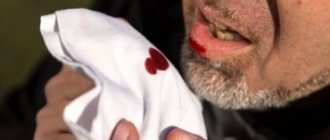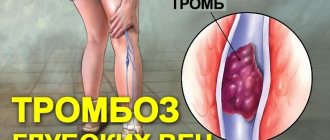Facial swelling is not only a cosmetic defect; if it appears frequently or is accompanied by redness and pain, it is a sign of quite serious health problems that need to be identified and treated.
ALENA PARETSKAYA
Pathophysiologist, immunologist, member of the St. Petersburg Society of Pathophysiologists ANDREY GRACHEV Leading cardiologist of the SM-Clinic holding, MD, academician of the Russian Academy of Medical Sciences
Facial edema is not a separate disease, but only a reflection of an imbalance between retention and excretion of fluid in the body. But what problems in the body can cause the face to swell and how serious is it?
Why does the face swell in adults?
Swelling on the face can occur at different times of the day - mainly in the morning or late afternoon, or they persist throughout the day, decreasing or increasing.
There are two types of reasons:
- physiological (or natural, not associated with diseases), they are usually not pronounced, not very strong, and disappear quickly;
- pathological, can be very strong, with changes in facial features, signs of inflammation, and are often quite persistent.
Each type of edema has the most typical causes; they occur mainly in the morning or evening hours, or do not depend in any way on the time of day. These characteristics are important for the doctor so that he can identify the leading causes and determine the tactics of examination and treatment.
Diuretic tablets are divided into four types:
- Potassium-sparing. Keeps potassium at a stable level, since potassium is usually released when using diuretics.
- Loopbacks. Suppress the reverse absorption of potassium, chlorine and sodium.
- Thiazide. They have the property of being quickly absorbed by the walls of the gastrointestinal tract.
- Thiazide-like diuretics. With a diuretic effect, less potassium is excreted from the body.
Diuretics also help with hypertension. Excess fluid is removed from the body and blood pressure decreases. Accordingly, swelling of the legs also decreases or disappears. The most common medications are:
- Hydrochlorothiazide
- Chlorothiazide
- Indapamide
- Furosemide
Is there swelling on the face due to heart disease?
Yes, these questions usually worry women, says cardiologist Andrei Grachev.
They run to see a cardiologist when they can’t put a ring on their finger in the morning because it’s swollen or put on makeup because their face is swollen. The patient wants to look great, regardless of age and health status. And this is commendable. Men, as a rule, do not contact a cardiologist with such questions. The peculiarity of this issue is due to the fact that in patients with cardiovascular diseases, as a rule, swelling on the face appears at the final stage of a complication such as heart failure. First, they appear on the legs (the lowest point in relation to the heart), then fluid accumulates in the abdominal cavity, the liver and spleen enlarge (as a blood depot). And only after the fluid reaches the pleural cavities and the heart sac, swelling may occur on the face or hands.
Selection of diuretics
Regardless of the purpose for which diuretics are used - to stimulate the urinary function of the kidneys, correct chronic heart failure, relieve swelling or treat hypertension (one of the most common purposes when “light” diuretics are used), there are contraindications to their use.
For example, they try not to prescribe diuretics for diabetes mellitus, since many of them reduce the sensitivity of tissues to insulin. Gout and any other condition that causes elevated uric acid levels is also a factor against taking diuretics. An insufficient level of potassium in the blood is another contraindication to the prescription of diuretics - further “washing out” of potassium threatens the development of cardiac arrhythmias.
On the other hand, there is a group of so-called potassium-sparing diuretics that should not be taken if potassium levels are elevated. Liver cirrhosis and liver failure are another contraindication to taking diuretics.
In most cases, when the use of diuretics is contraindicated, the use of diuretic herbal decoctions may be considered.
What to drink for swelling? This is exactly how patients sometimes pose the question, but this is fundamentally wrong. Regardless of the origin of edema, the treatment will be complex, and what will be included in it will depend on the pathology itself and its stage, and only a specialist should decide this. Thus, treatment with these drugs alone, without correction of the ionic composition of the plasma, can lead to a large loss of fluid and mineral salts from the vascular bed, and this output will be greater than from the intercellular space. This can lead to a decrease in the amount of liquid part of the blood, or plasma, a decrease in the pumping function of the myocardium and a sharp drop in blood pressure, which can manifest as collapse. If the patient also has symptoms of heart failure, this will cause a reduced return of venous blood to the heart, and will further aggravate the low cardiac output.
Since there are a lot of options, let’s look at drug therapy regimens using the example of venous, as well as cardiac and renal pathologies as the most striking. The most powerful diuretic is Mannitol, which can be prescribed for any swelling. Also, in case of high blood pressure, it is recommended to use ethacrynic acid. However, it is not recommended to choose and use the drug yourself. At a minimum, you should read the instructions, and best of all, get advice from a specialist.
Doctors also recommend the effective drug Trifas (torsemide), available in tablets. The recommended dose is ½ tablet per day. Side effects may occur when using the drug, so it is better to take it only as prescribed by a doctor. Previously mentioned was Hydrochlorothiazide, which is prescribed in the following cases: arterial hypertension, nephrotic edema, chronic renal failure, liver cirrhosis with ascites, acute glomerulonephritis. At the same time, it reduces swelling and fights other problems. Available in tablets.
When do they occur most often?
Due to a number of circumstances, adds cardiologist Andrei Grachev, such as the flow of fluid to the upper half of the body in a lying position, changes in the biorhythms of hormone production (more often their active synthesis occurs at night or in the early morning hours), edema syndrome most often manifests itself in the early morning hours .
Morning
If we talk about physiological reasons, morning swelling is usually associated with constant lack of sleep, fasting or strict diets (limiting protein and fats). Sometimes swelling in the morning is caused by the wrong selection of skincare products (face cream, toner or cleanser). Also, morning swelling of the face can be caused by crying or stress in the evening or at night.
Possible swelling of the face in the morning due to an incorrectly selected pillow (it is too high, it provokes a narrowing of the blood vessels in the neck). Another physiological factor is an excess of fried, salty foods or liquids taken in the evening, before bed. In women, facial swelling in the morning can be caused by hormonal fluctuations, PMS or pregnancy. Some women report morning swelling during menopause.
Pathological causes of morning edema are mainly kidney damage. Such swelling is usually soft, mobile, appears on the face after sleep, and the skin acquires a waxy or yellowish tint. The most common causes of facial swelling are:
- glomerulonephritis - the acute form of the disease leads to edema, which lasts up to 2-3 weeks, if the process enters the chronic phase, edema is typical for periods of exacerbation of inflammation;
- Kidney amyloidosis - edema is typical of the second stage (proteinuria), when protein loss occurs and kidney function gradually deteriorates;
- membranous nephropathies - occur after taking certain medications, tumor therapy, acute infectious pathologies. Edema occurs in waves, with sharp or barely noticeable symptoms;
- chronic kidney disease (previously called renal failure) - swelling occurs gradually as renal damage progresses;
- kidney damage in severe systemic pathologies - edema is typical for nephropathy due to diabetes or systemic lupus erythematosus.
Evening
Sometimes facial swelling becomes noticeable in the evening, especially after an active day. Often this is one of the manifestations of pathologies of the cardiovascular system. Often, swelling of the face is accompanied by severe swelling in the area of the extremities - hands and feet, legs. These swellings are denser, the skin has a lower temperature than on other parts of the body, and such swelling goes away slowly. Often occur against the background of the following pathologies:
- amyloidosis of the heart and blood vessels;
- cardiomyopathy;
- sclerotic heart disease (cardiosclerosis);
- certain types of arrhythmia;
- constrictive pericarditis;
- some heart defects;
- arterial hypertension;
- cardiac lesions due to rheumatism.
Day
Sometimes facial swelling is most pronounced during the day or its appearance is not clearly related to the time of day. Among the main pathologies that lead to such edema are endocrine disorders - especially a lack of thyroid hormones (hypothyroidism). Facial swelling is especially pronounced with congenital hypothyroidism, in pregnant women or with autoimmune thyroiditis, cytokine-induced thyroiditis.
Rapidly increasing swelling of the face during the day can be a sign of allergies - to food, insect bites, cosmetics, medications and even cold. Sometimes facial swelling occurs during an attack of bronchial asthma due to difficulty breathing and fluid retention in the veins.
Facial swelling is possible in people who smoke and drink alcohol. This is due to the increased work of the lymphatic system to remove toxins from tissues.
Severe swelling of the face during the day is possible with respiratory infections and their complications - sinusitis, tonsillitis, frontal sinusitis. Swelling of the face is possible with a deficiency or excess of vitamins (especially fat-soluble ones).
Causes of leg swelling
When there is too much fluid in the tissues, it means that there is a malfunction in the functioning of the body. Most often, swelling is caused by:
- protein metabolism disorder;
- damage to cell membranes, increasing their permeability;
- changes in pressure differences in tissues and vessels;
- impaired blood circulation.
There are many reasons for such failures. Some are temporary (allergic reaction, bruise, infection). Others indicate the development of pathologies of the lower extremities (varicose veins, thrombophlebitis). Still others indicate serious diseases of the internal organs (heart, kidneys, lymphatic system).
A person cannot independently determine why his foot is swollen: because of uncomfortable shoes or because of a blocked blood vessel. Therefore, you should not postpone a visit to the doctor for subsequent treatment.
How to quickly relieve facial swelling in adults
If this is physiological swelling of the face, not associated with serious pathologies that require medical supervision and the use of selected medications, excess fluid can be eliminated through certain simple measures and actions.
Taking a contrast shower or washing with cold/hot water. This method refreshes, increases tissue tone, enhances the outflow of fluid from the skin and reduces swelling.
Using ice – a couple of pieces of ice will help deal with swelling on the face quickly and effectively. In addition, you can prepare herbal decoctions with a tonic effect in advance and freeze them, using them for washing.
Facial massage is an effective remedy that helps improve microcirculation and swelling. Manual massage, the use of rollers, ice cubes, and cold spoons help. Sometimes you can first wipe your face with green tea and apply compresses with it to your face and eye area.
Diuretic herbs
Herbs with a diuretic effect are prescribed by a doctor for extensive swelling of the face, arms and legs if there is kidney failure or severe inflammation of the urinary system. If conservative treatment methods have not brought visible results, then properly selected herbs can bring relief and solve the patient’s problem.
Many medicinal plants have a diuretic effect. The most popular, affordable and effective: chamomile, bearberry, rose hips, nettle, milk thistle. Diuretic herbal mixtures for edema can not only reduce the amount of fluid in the body, but also improve heart function. Hawthorn copes well with this serious task. Despite the fact that it has a weak diuretic effect, improving the functioning of the heart muscle allows you to eliminate edema and other unpleasant symptoms. Hawthorn goes well with bearberry, which enhances the diuretic effect.
Back to articles
Are diuretics effective for swollen eyes?
The use of diuretics to relieve swelling in the eye area can be effective in the following cases.
- The swelling does not go away within 24 hours and only gets bigger.
- Gradually, swelling moves from the eye area to other areas of the face, in particular the cheeks. Edema tissues appear darkened.
- As a result of swelling, the palpebral fissure narrows (in severe cases, this can lead to displacement of the eyeball).
If a person experiences such symptoms, he will most likely be prescribed diuretics to quickly relieve swelling. But it is important to understand that diuretics do not treat the cause of swelling. Therefore, in parallel with the use of diuretics, it is necessary to carry out comprehensive diagnostics. She will help you find out what caused the fluid retention and prescribe appropriate therapy.
Prevention
Swelling cannot always be prevented, since it can occur under the influence of uncontrollable factors. There is no way to prevent a bruise or insect bite. But in general, maintaining hydrobalance in the body is easy:
- Observe the drinking regime: fully quench your thirst, but do not drink more than you should.
- Stick to a diet during the hot season: minimize the consumption of salty and spicy foods, eat more fruits, drink tea with lemon instead of coffee.
- Arrange water treatments: contrast showers, foot baths.
- Move more: walking, swimming, aerobics do not allow fluid to stagnate.
In summer, you should avoid tight, high-heeled shoes. It is useful to periodically place your feet on an elevation so that fluid concentrated in the lower part of the body drains. There is no need to abuse medications. Urinary and antihypertensive drugs should be prescribed by a doctor. Any diseases that have a similar symptom must be treated in a timely manner.
Tokareva Lyudmila Georgievna, therapist, medical offices 36.6.
THERE ARE CONTRAINDICATIONS, BEFORE USE YOU MUST CONSULT WITH A SPECIALIST
Relieving swelling during pregnancy
In the body of a woman carrying a fetus, the concentration of the hormone progesterone increases. It is one of the causes of edema during pregnancy. In no case should it be reduced, because it is this that ensures the attachment of the embryo.
There is no need to fight physiological swelling. The main thing is to prevent it from getting worse. To alleviate the symptoms, you can carry out the mentioned water procedures and adhere to a healthy lifestyle (moderate activity, water consumption within the daily norm, adjusted for restrictions imposed by pregnancy, rest on your side).
The pathological nature of edema can only be determined by a doctor based on test results (in particular, protein in the urine). Having discovered the cause, he will prescribe treatment. It is prohibited to take any medications on your own.
How to relieve swelling after a bruise
Treatment for a leg bruise usually comes down to eliminating pain and swelling. The swelling in this case is caused by damage to the blood vessels and the accumulation of fluid from them under the skin. The latter puts pressure on the nerve endings, hence the pain. So eliminating swelling also helps to get rid of unpleasant sensations.
You can help a bruised limb at home:
- stretch and provide peace;
- apply a wet towel, ice or a heating pad with cold water;
- apply a tight bandage.
You can also resort to drug treatment. External agents containing troxerutin or heparin will help. They strengthen capillaries, optimize blood viscosity and relieve inflammation.
How to relieve leg swelling caused by heat
The best medicine in this case is gravity. Arriving home and throwing away the shoes that have become a vice, it is enough to lie down and place your feet higher (at a minimum - on several pillows, at a maximum - against the wall).
When it becomes easier to move, you need to take a shower. Ideally, a contrasting one that trains blood vessels, but you can limit yourself to just cool. In this case, you should direct the pressure to the feet: such a hydromassage will restore blood circulation.
You can disperse the fluid with light exercises: pulling the toe towards you and away from you, rotating your feet, squatting. But if you don’t have the strength to do this, and your legs hurt, it’s better not to torture them.
Foot baths are also useful. Even plain water will provide relief, but you can enhance the effects with additives. This could be sea salt or herbal infusions. Compresses made from cabbage leaves or bandages soaked in a decoction of birch leaves improve the condition of the limbs.










